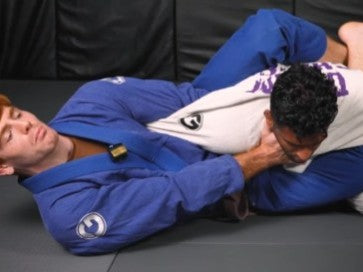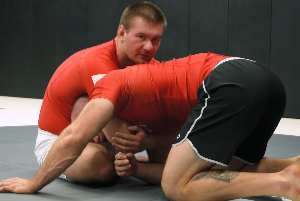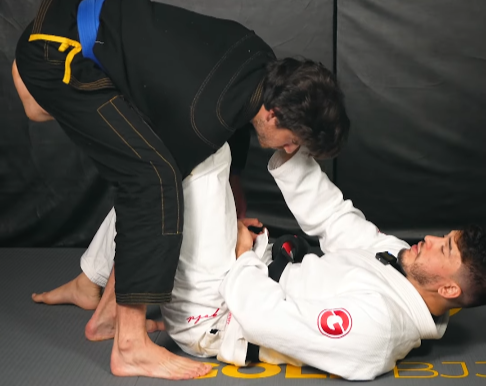Are you ready to embark on a journey through the Brazilian Jiu-Jitsu (aka BJJ) belt system? Prepare to learn about the various belt colors, their significance, and the dedication required to progress through the ranks. Let’s get started!
Short Summary
-
The BJJ belt system is a structured way to recognize practitioners’ progress and motivate their dedication.
-
The journey from white belt to black belt develops physical, technical & mental prowess. Beyond the black belt are red & coral belts.
-
Instructors evaluate student’s skill for promotions, ensuring growth is reflective of practitioner’s journey.
Understanding the BJJ Belt System
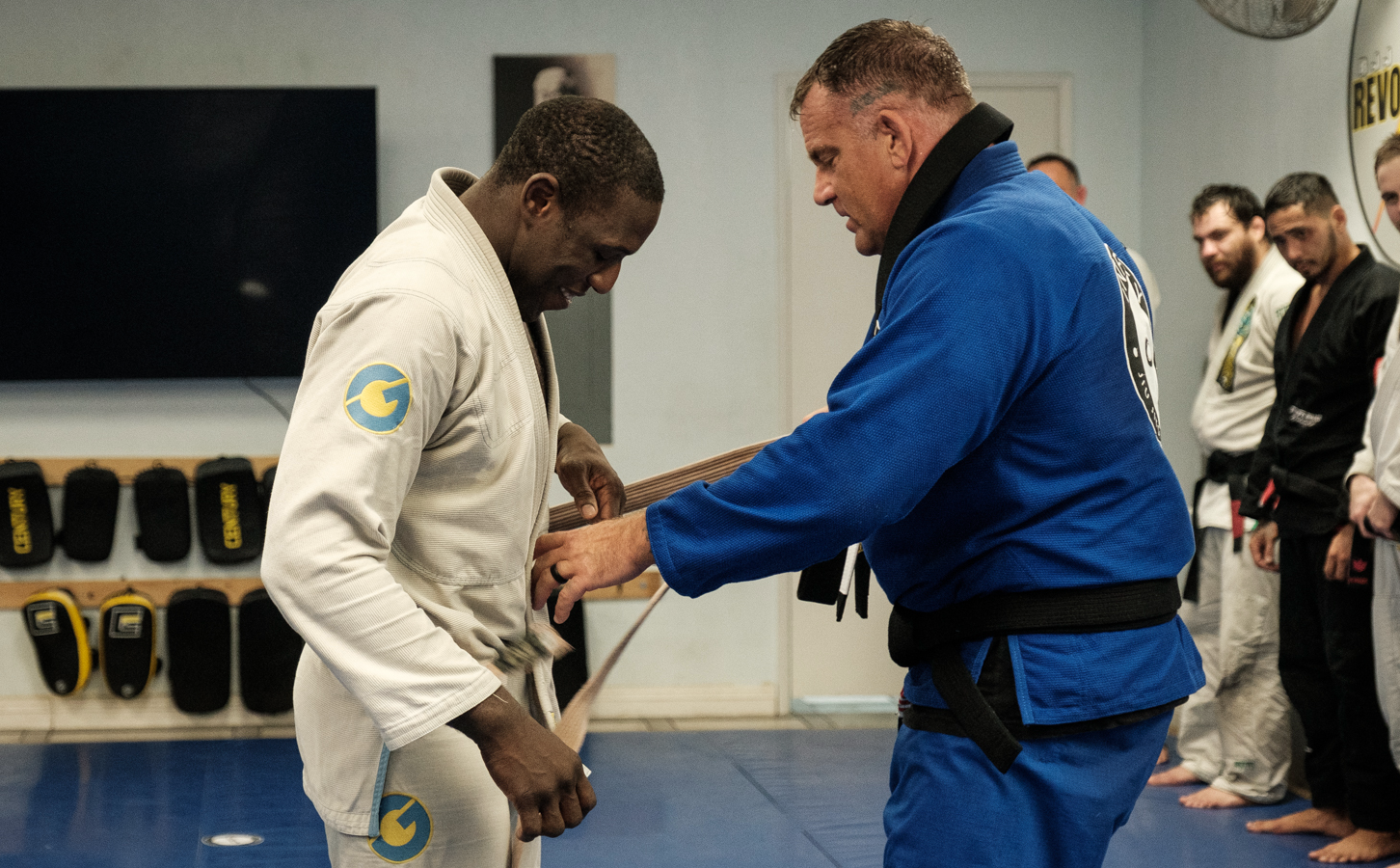
The BJJ belt system is a structured and standardized way to recognize and reward practitioners of Brazilian Jiu-Jitsu for their hard work and dedication to the art. It consists of various brazilian jiu jitsu belts that signify the practitioner’s journey and progress in Jiu-Jitsu. The International Brazilian Jiu-Jitsu Federation (IBJJF) sets specific guidelines to standardize the progression and achievements of BJJ practitioners, including the brazilian jiu jitsu belt system, ensuring fairness and consistency.
In BJJ, there are five main belt ranks for adults:
-
White
-
Blue
-
Purple
-
Brown
-
Black
For children, there are additional belt colors to accommodate their unique learning journey. The belt system acts as a roadmap, guiding practitioners through their development in the martial art. The higher the belt, the greater the knowledge, skill, and experience the practitioner possesses.
The Five Main Belts
The five main belts in BJJ, from lowest to highest ranked, are: white, blue, purple, brown, and black.
Each belt represents a new level of expertise and mastery. The journey begins with the white belt, where practitioners learn the basics and develop the proper mindset for training. As you progress through the ranks, you’ll encounter new techniques, strategies, and challenges, ultimately culminating in the revered black belt.
It’s important to note that reaching a black belt is not the end of your BJJ journey. In fact, it’s just the beginning of a lifelong pursuit of mastery in the art. Many dedicated practitioners continue to train and refine their skills after achieving the black belt, seeking to deepen their understanding and further develop their abilities.
Stripes and Degrees
Stripes are an excellent way to track your progress within a belt level, with four stripes between each belt to mark your milestones. As you learn and grow, your instructor will award you stripes to acknowledge your achievements and dedication. These stripes serve as stepping stones, motivating you to keep pushing forward as you work towards the next belt level.
Degrees, on the other hand, are added to black belts to indicate a deeper level of mastery. As a black belt, you can earn up to six degrees, each representing an additional level of expertise and accomplishment. The process of earning degrees is a reflection of your continued dedication to the art, as you strive to become the best martial artist possible.
The Journey from White to Black Belt

The path from white to black belt in BJJ is a long and challenging one, requiring dedication, discipline, and hard work. It is not uncommon for practitioners to spend years at each belt level, refining their techniques and building a strong foundation in the art. Each belt level presents its own unique set of challenges and learning experiences, shaping you into a well-rounded and skilled martial artist.
Despite the challenges, the journey from white to black belt is an incredibly rewarding and transformative experience. Throughout this journey, you’ll develop:
-
Physical and technical prowess
-
Mental fortitude
-
Discipline
-
A deep understanding of the art
Embrace the challenges and savor the victories, for they are all part of the incredible journey that is Brazilian Jiu-Jitsu.
White Belt
The white belt is the starting point in BJJ, where practitioners learn the basics and develop the proper mindset for training. During this stage, you will be introduced to fundamental techniques and concepts, such as breakfalls, hip escapes, and basic submissions. As a white belt, your primary focus should be on building a strong foundation in the art, learning the essential movements, and developing proper body mechanics.
In addition to learning techniques, the white belt level is also about cultivating a positive attitude towards training. This includes embracing challenges, remaining humble, and being open to learning from your mistakes. With hard work and dedication, you can progress from the white belt level to the next exciting milestone: the blue belt.
Blue Belt
The blue belt signifies the beginning of the true BJJ journey, with a focus on building a strong defense and escaping major positions. As one of the blue belts, you’ll be expected to have a solid understanding of the basics and be able to demonstrate proficiency in a variety of techniques. This is the stage where you’ll start to develop your own unique style and approach to the art, as you explore different guards, passes, and submissions. In comparison, the green belt represents a different level of expertise in the BJJ hierarchy.

At the blue belt level, it’s essential to continue refining your techniques and expanding your knowledge. This includes learning more advanced concepts, such as timing, balance, and leverage, as well as studying the tactics and strategies of higher-level practitioners. With perseverance and a commitment to growth, you’ll be well on your way towards the next stage in your BJJ journey: the purple belt.
Purple Belt
At the purple belt level, practitioners focus on:
-
Movement
-
Momentum
-
Refining their techniques
-
Specializing in specific guards and combinations
The purple belt is often considered a turning point in a practitioner’s BJJ journey, as it marks the transition from simply learning techniques to truly understanding the art.
As a purple belt, you’ll be expected to demonstrate a high level of technical proficiency and tactical awareness. This includes being able to chain together techniques, anticipate your opponent’s movements, and adapt your game plan on the fly. Your dedication and hard work at this stage will serve as the foundation for your continued growth and development in the art, setting the stage for your eventual progression to the brown belt.
Brown Belt
Brown belts are expected to have their own style, be able to teach BJJ, and master counters and signature techniques. Achieving the brown belt is a testament to your dedication and perseverance in the art, as it signifies your transition from being a student to becoming a teacher and mentor to others.
At this level, you’ll be expected to demonstrate a deep understanding of the art and its underlying principles. This includes being able to analyze and dissect techniques, as well as create and modify them to suit your own unique style.
With the knowledge and experience you’ve gained as a brown belt, you’ll be well-prepared to take on the ultimate challenge: the black belt.
Black Belt
A black belt is a master grappler who continues to learn and grow, embodying humility, efficiency, and respect. Achieving the black belt is the culmination of years of hard work, dedication, and perseverance, marking the beginning of a new chapter in your BJJ journey.
As a black belt, you’ll be expected to:
-
Serve as a role model and mentor to others
-
Share your knowledge and experience with the next generation of practitioners
-
Continue your growth and development
-
Strive to refine your skills
-
Deepen your understanding of the art
-
Contribute to the growth and evolution of Brazilian Jiu-Jitsu
Your journey as a jiu jitsu practitioner and black belt will be one of continued growth and development, as you strive to refine your skills, deepen your understanding of the art, and contribute to the growth and evolution of Brazilian Jiu-Jitsu.
Beyond the Black Belt: Red Belts and Coral Belts
After achieving a black belt, practitioners can earn up to six stripes before being promoted to a red belt, with red and black belts (coral belts) representing the highest levels of mastery in BJJ. The journey to these esteemed ranks is a testament to the practitioner’s unwavering commitment and dedication to the art.
The red and black belt, or coral belt, symbolizes a 7th-degree black belt, while the red belt represents the pinnacle of achievement in BJJ. The red and white belt, along with these advanced practitioners, serve as inspiration and motivation to those on their own BJJ journeys, reminding them that with hard work, perseverance, and an unyielding passion for the art, anything is possible.
Kids BJJ Belt System
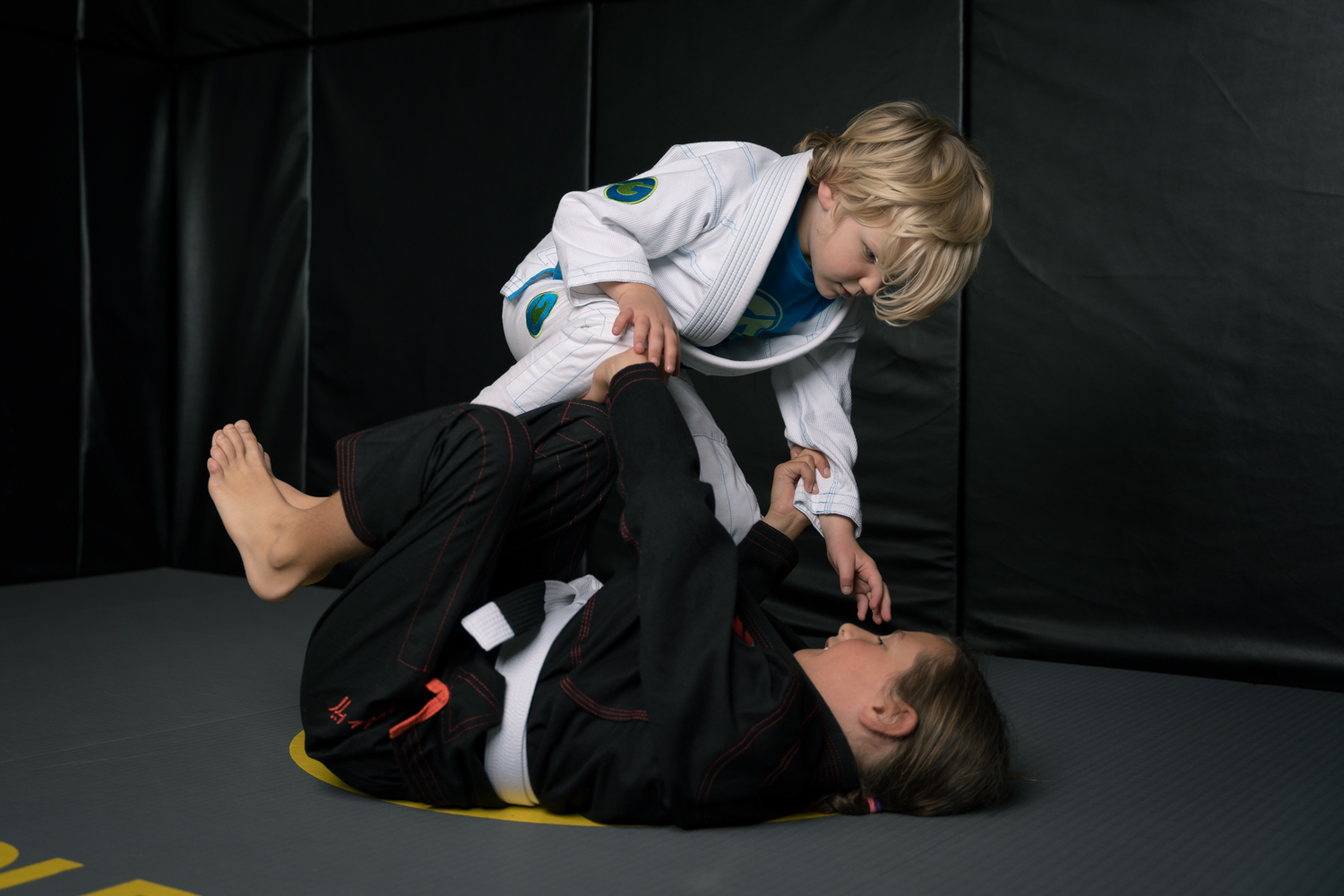
The belt system for children in BJJ is different from the adult belt system. It starts with white and progresses through the following colors:
-
Gray
-
Yellow
-
Orange
-
Green
-
Blue (after turning 16)
This unique belt system is designed to accommodate the specific needs and learning styles of young practitioners. It provides them with milestones and challenges that are appropriate for their age and skill level.
The Kids BJJ Belt System serves as a motivating and engaging roadmap for children to follow as they develop their skills in the art. With each new belt, young practitioners are encouraged to set new goals, overcome challenges, and continue their journey towards becoming well-rounded and skilled martial artists.
Factors Affecting Belt Progression
Several factors can influence the time it takes to progress through the BJJ belt system, including:
-
The number of training sessions per week
-
Injuries
-
Changing schools
-
Individual dedication
The more frequently you train, the faster you’ll progress, as long as you remain consistent and committed to your practice.
Injuries can temporarily slow down or even pause your progress through the BJJ belt system, but with focus and dedication, you can still reach your goals. Changing schools can also affect your belt progression, as different schools may have different standards and expectations.
Ultimately, your progression through the BJJ belt system will depend on your personal dedication, effort, and perseverance.
BJJ Belt System in No-Gi Training
While most No-Gi systems do not use belts in training at least, some use colored rash guard (ours are routinely voted the best rash guards on the market) or follow traditional belt progression, such as the 10th Planet system. This innovative approach to No-Gi training provides practitioners with a unique and engaging way to track their progress, while still adhering to the principles of the traditional BJJ belt system.
The 10th Planet system, for example, follows the BJJ belt progression, allowing practitioners to advance through the ranks as they develop their skills and knowledge in the art. Regardless of the specific No-Gi system you choose to follow, the underlying principles of hard work, dedication, and a commitment to growth remain the same.
Comparing BJJ Belt System to Other Martial Arts
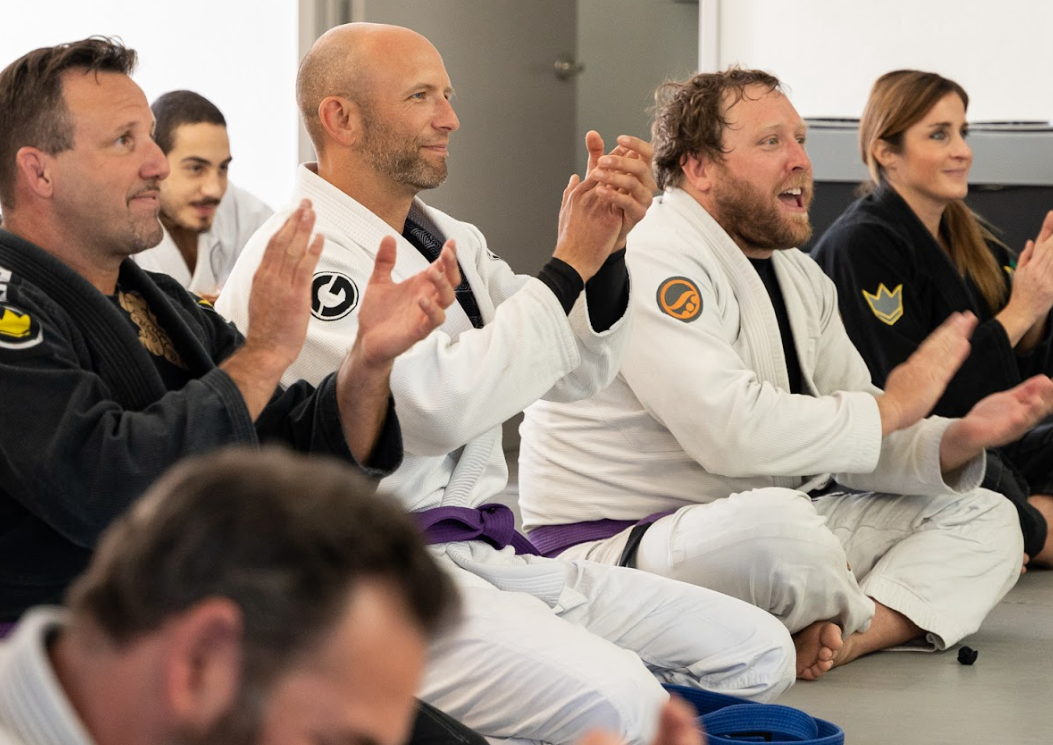
The BJJ belt system, also known as the jiu jitsu belt system, is unique compared to other martial arts like Tae Kwon Do and Judo, with fewer belt colors and a greater emphasis on skill and time spent training. While other martial arts may award belts based on the completion of specific requirements or tests, the BJJ belt system places a greater focus on the practitioner’s overall development and growth in the art.
This emphasis on skill and dedication to training sets the BJJ belt system apart from other martial arts, creating a challenging and rewarding journey for practitioners. As you progress through the ranks, you’ll not only gain technical prowess but also develop a deep understanding of the art and its underlying principles.
The Role of Instructors in Belt Promotions
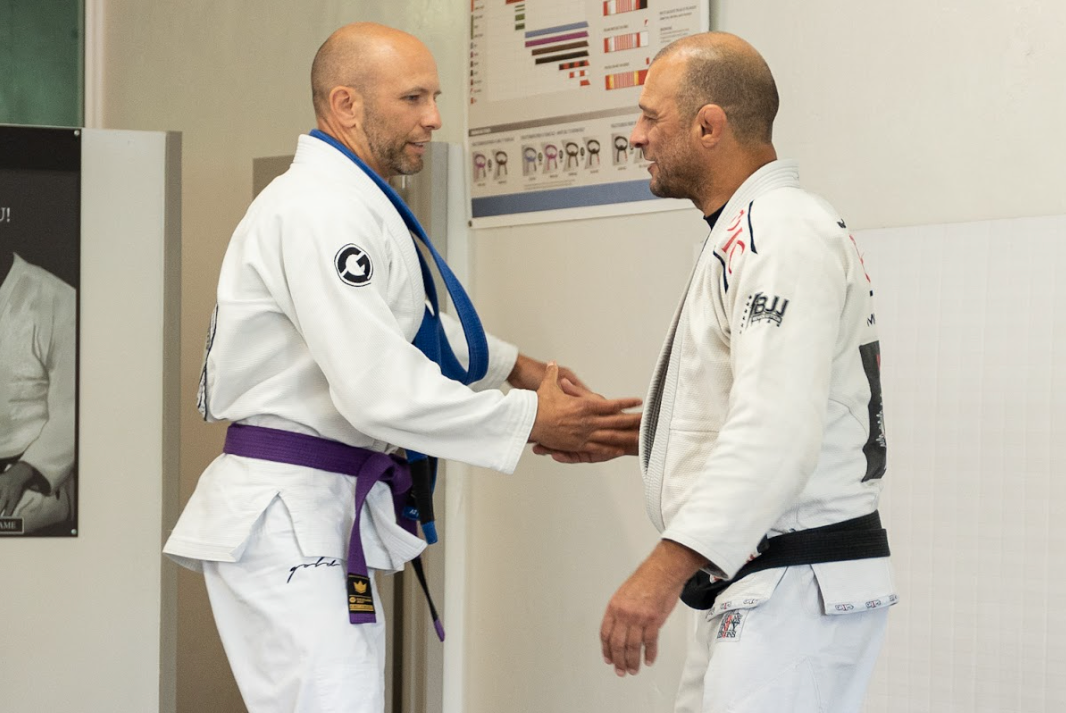
Instructors play a crucial role in determining belt promotions, using their discretion and knowledge of a student’s progress to decide when they are ready to advance to the next level. This ensures that promotions are based on the individual’s abilities and achievements, rather than simply meeting a predetermined set of requirements.
Instructors consider factors such as:
-
skill level
-
knowledge
-
effectiveness
-
mindset
-
individual goals
-
age
When determining when a student is ready for promotion. By carefully evaluating each student’s progress and achievements, instructors can ensure that belt promotions are meaningful and reflective of the practitioner’s growth in the art.
Summary
In conclusion, the BJJ belt system is a structured and rewarding journey that tracks a practitioner’s progress and achievements in the art of Brazilian Jiu-Jitsu. With each new belt level comes new challenges, learning experiences, and opportunities for growth. Whether you’re just starting out with a white belt or striving for the esteemed red belt, the BJJ belt system provides a motivating and engaging roadmap for your journey in the martial art. Embrace the challenges, celebrate the victories, and continue to grow as a martial artist and a person.
Frequently Asked Questions
How many years does it take to get belts in BJJ?
With dedication and hard work, the process of attaining a belt in Brazilian Jiu-Jitsu (BJJ) can be achieved in 4-6 years. The length of time will depend on your commitment and level of experience, making it a challenging and rewarding journey.
What BJJ belt is Joe Rogan?
It’s no secret that Joe Rogan has dabbled in many disciplines, but few know that he has earned a legitimate black belt in Brazilian jiu-jitsu. That’s right, Joe is a BJJ black belt!
He has trained in martial arts for over 20 years and has competed in numerous tournaments. He has also trained with some of the best BJJ practitioners in the world, including Renzo Gracie and Eddie Bravo.
Joe’s black belt is a testament to his success.
What is Conor McGregor BJJ belt?
Conor McGregor is an accomplished martial artist and a gifted athlete, having won belts in different fighting disciplines. McGregor has trained diligently under his coach John Kavanagh, earning himself a Brazilian Jiu-Jitsu brown belt in 2014.
Conor McGregor’s BJJ belt is a testament to his commitment to the sport and his expertise in grappling.
At what belt do most people quit BJJ?
It takes a lot of commitment and hard work to progress in BJJ, which is why many people give up around the blue belt rank. Most individuals who begin BJJ do not have the discipline to continue past this level.
Those who stay will feel a great sense of accomplishment for reaching the purple belt. So challenge yourself to make it to the top - it is certainly achievable!
How long does it take to progress from one belt to another in BJJ?
BJJ is a rewarding but challenging journey, and it takes dedication and commitment to progress from one belt to the next - typically taking around 2-3 years.
It requires a lot of hard work and dedication to reach the next level, and it can be a long and difficult process. But the rewards are worth it, and the sense of accomplishment you get from achieving each belt is unparalleled.

